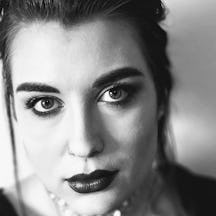With the inexorable growth in the popularity of crime TV series on streaming services there has been a matching increase in the demand for realistic bodies on-screen. Special-effects expert Hildegunn M S Traa explores the last 70 years in cadaver aesthetics.
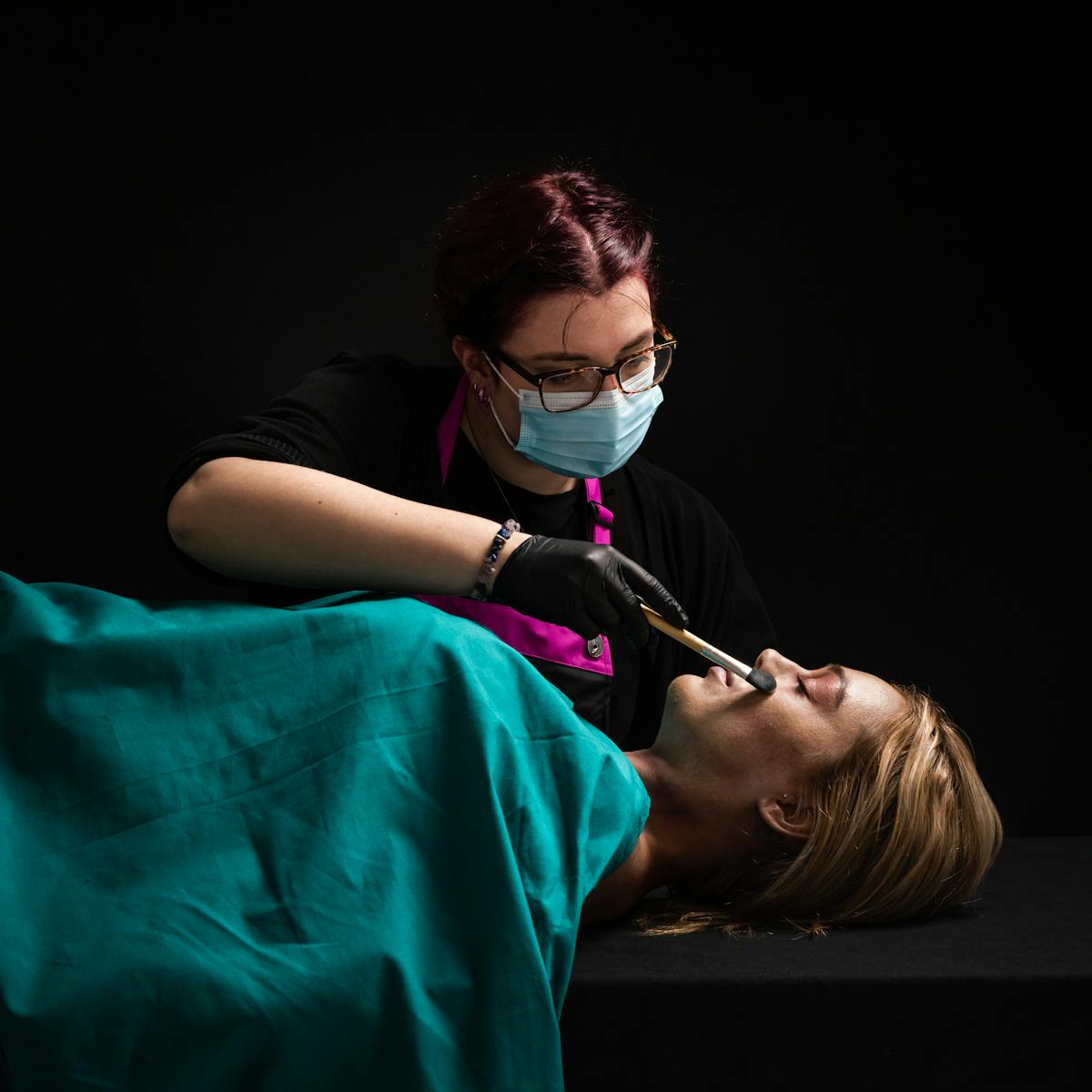
This article contains images of prosthetic make-up some readers may find disturbing.
It is a classic scene. A dark, cold morgue and a body covered with a sheet. A grumpy detective accompanied by a gloomy medical examiner unveils a beautiful, young, pale woman. The only thing separating her from appearing as a delicately peaceful, sleeping human is the Y-incision scar cut deep into her chest.
This used to be the common way of depicting cadavers on the slab: beautiful, but not very realistic from a forensic or medical perspective. Why we depict death the way we do and how we create a corpse fit for TV are two of the morbid questions I have explored both academically in my studies and practically as a prosthetic make-up artist.
Let’s start off with the practical reasons. Airtime plays a huge part in what is seen as appropriate to show on TV. The questions of which audience this show is directed towards, and whether it will air on a restricted channel like HBO, where the audience is controlled, or on a TV channel with a broader demographic of people are important.

A selection of pre-painted prosthetic pieces ready to be applied.
The cadaver and the show’s narrative must be fit for its target audience and age group. Since HBO is a subscription television channel, its audience consists only of people who pay for the content, so it can therefore show more sexual activity and violence compared to other TV channels.
Secondly, budget considerations: how much money the production can afford to spend on a cadaver. A simple ‘Y-incision’ prosthetic on an actor is considerably cheaper than full-body ‘burn victim’ make-up or a realistic silicon cadaver made to the exact likeness of the actor. The price could range from £400 to well over £15,000, which is a massive difference and would limit many productions.
Tight budgets can make you very creative, and I have seen burned cadavers being made of just cheap plastic skeletons, polyurethane foam, clingfilm, latex and acrylic paint. As creative professionals we work with what we’ve got, and most of us are extremely good at problem-solving.
Thirdly, timeframe. Programme makers need to consider what is realistically possible to make within the schedule of the show. I myself have worked 18 days straight doing about 80 hours a week to finish a project. I know of colleagues who have worked over 30 hours straight to make sure prosthetics or creatures were completed in time.
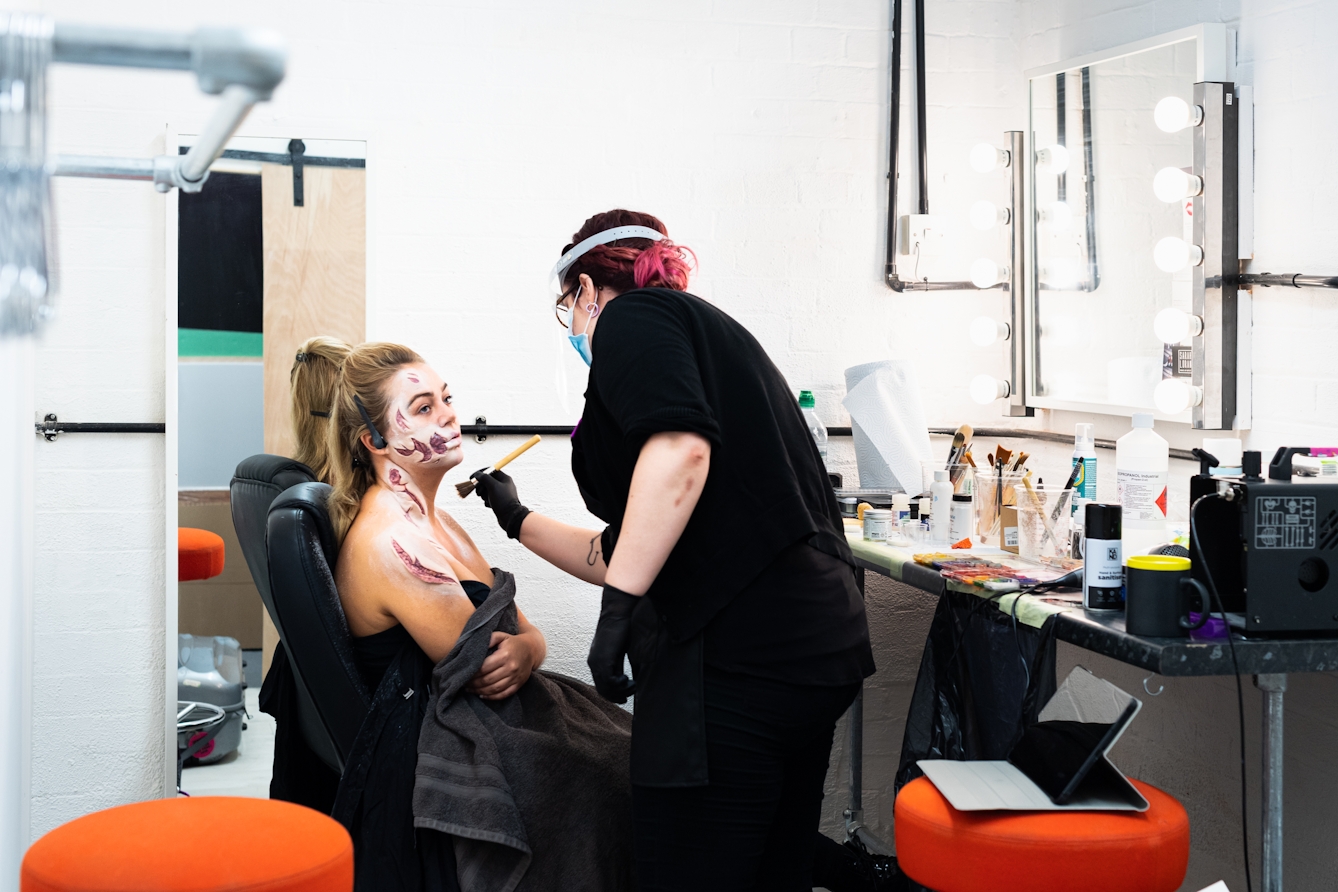
Once the prosthetic pieces are glued onto the body, the edges are then blended into the surrounding skin.
People in the special-effects industry are very dedicated and work extremely hard for often very little recognition. However, it is extremely satisfying to see the final result reaching the screen and the reactions from the audience when all the components of the ‘moving picture’ work together.
These practical challenges all make a difference to the final aesthetics of the cadaver. But let’s say that time and budget were available in abundance. What, then, determines the appropriate look of a ‘person on the slab’?
From the white sheet to the Y-incision
Images of death, and thoughts around death in a cultural setting have not been one selected, unchangeable depiction, prevalent for many years. The care of a corpse used to be the responsibility of the family in most Western cultures until it became a professional, institutionalised industry in the last 150 years or so. This was reflected in TV, and the depiction of the ‘sheet-covered corpse’ was the norm between around 1950 and 2000.
The start of this century saw the rise of forensics TV shows, with examples like ‘CSI: Crime Scene Investigators’ (2000–15) and ‘Bones’ (2005–17). With death no longer hidden under white fabric, the shows had to deal with showing death in a different way.
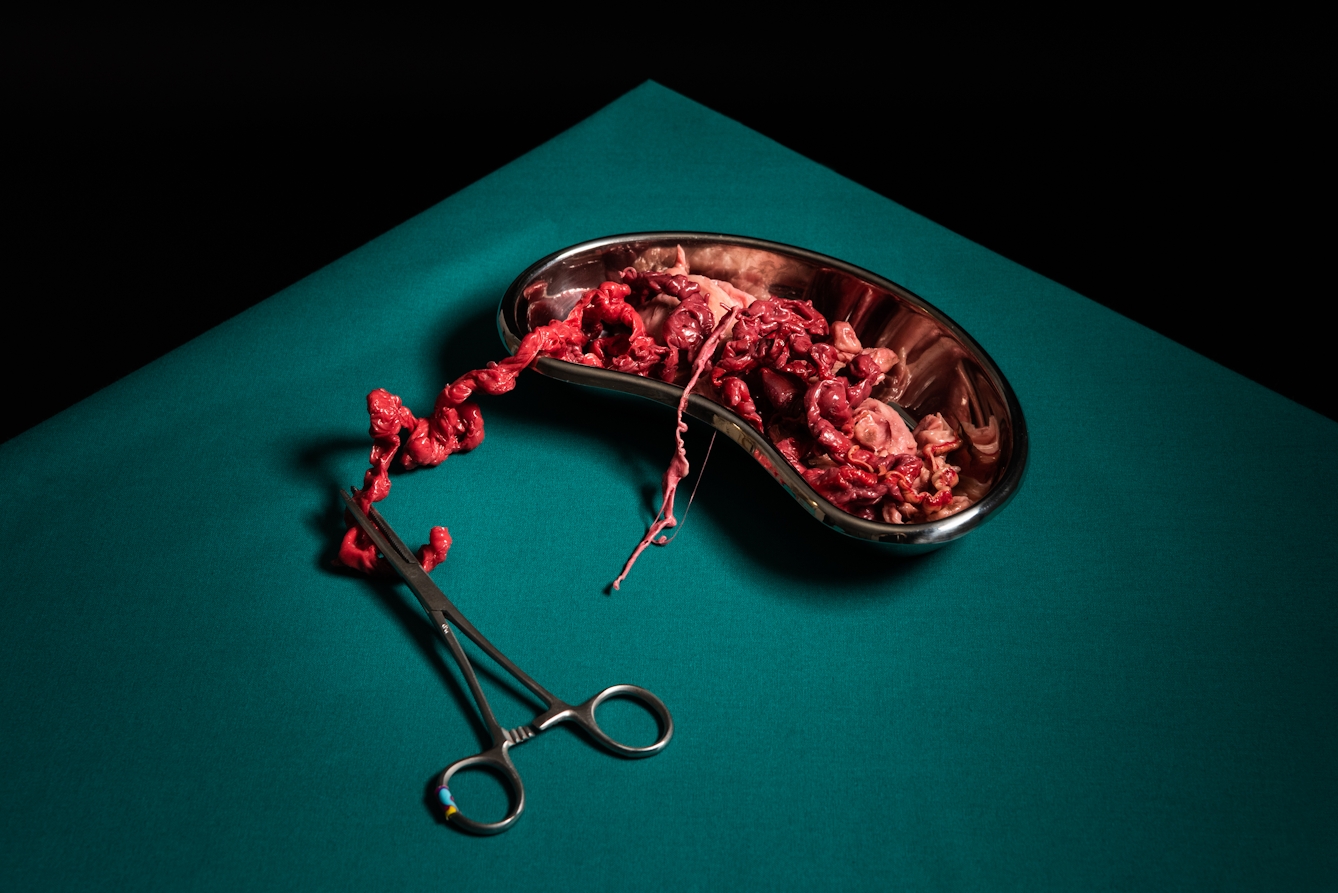
“A simple ‘Y-incision’ prosthetic on an actor is considerably cheaper than full-body ‘burn victim’ make-up or a realistic silicon cadaver.”
In many ‘CSI’ episodes the victim would be white, aged between 20 and 40, and meeting the standardised Hollywood aesthetics for facial and bodily looks.
The most frequently used ways were purification through beautification or the use of the forensic gaze. This resulted in either very beautiful or extremely horrific cadavers. For example, in many ‘CSI’ episodes the victim would be white, aged between 20 and 40, and meeting the standardised Hollywood aesthetics for facial and bodily looks.
The corpse would be an actor with pale make-up and some Y-scar prosthetics, which was not only cost-effective, but also reduced the risk of offending the audience and allowed the show wider airtime possibilities.
The corpse would simply look like a sleeping, ‘healthy’ and beautiful human being. However, this doesn’t show realistically diverse causes of mortality. Similarly, we can also discern a difference in gender portrayals. The cadavers with more injuries tend to be male (usually cis male), while victims that are female or children tend to be more censored, with fewer injuries.

The depiction on the left contrasts the gritty, modern approach to prosthetic make-up, with, on the right, the ‘prettier’, more purified portrayal seen in TV shows of the early 2000s.
The victims in these shows are made to create empathy within the channel’s desired voting and advertising audience: the white middle class. Sadly, even in death there is discriminative purification.
On the other hand, if the cadaver is depicted horrifically decomposed or burned, the facial and other identifying features are not present. It is reduced to a skeleton puzzle to be solved through the clinical eyes of science. This is the forensic gaze. To protect our empathic state, the remains are simply a clue to solve the case rather than something that was once a living being. We are disconnected from the fact that this is a person.
A cadaver, then, could be either beautiful or terrifying. Showing one with open eyes, or depicting pathologists cutting the skin or moving an uncovered body was rare in these TV shows. However, in more contemporary TV, we see a break with this dehumanising trend, and other depictions are more frequently on our screens.
Realism and empathy
By 2013 the spin-off show ‘CSI: NY’ (2004–13) had broken its own ‘rules’. It showed a drowned woman with open eyes and ‘skin slippage’, but still with recognisable features. The medical examiner even cut the skin during the episode to show the extensive slippage due to the body’s time submerged in water.
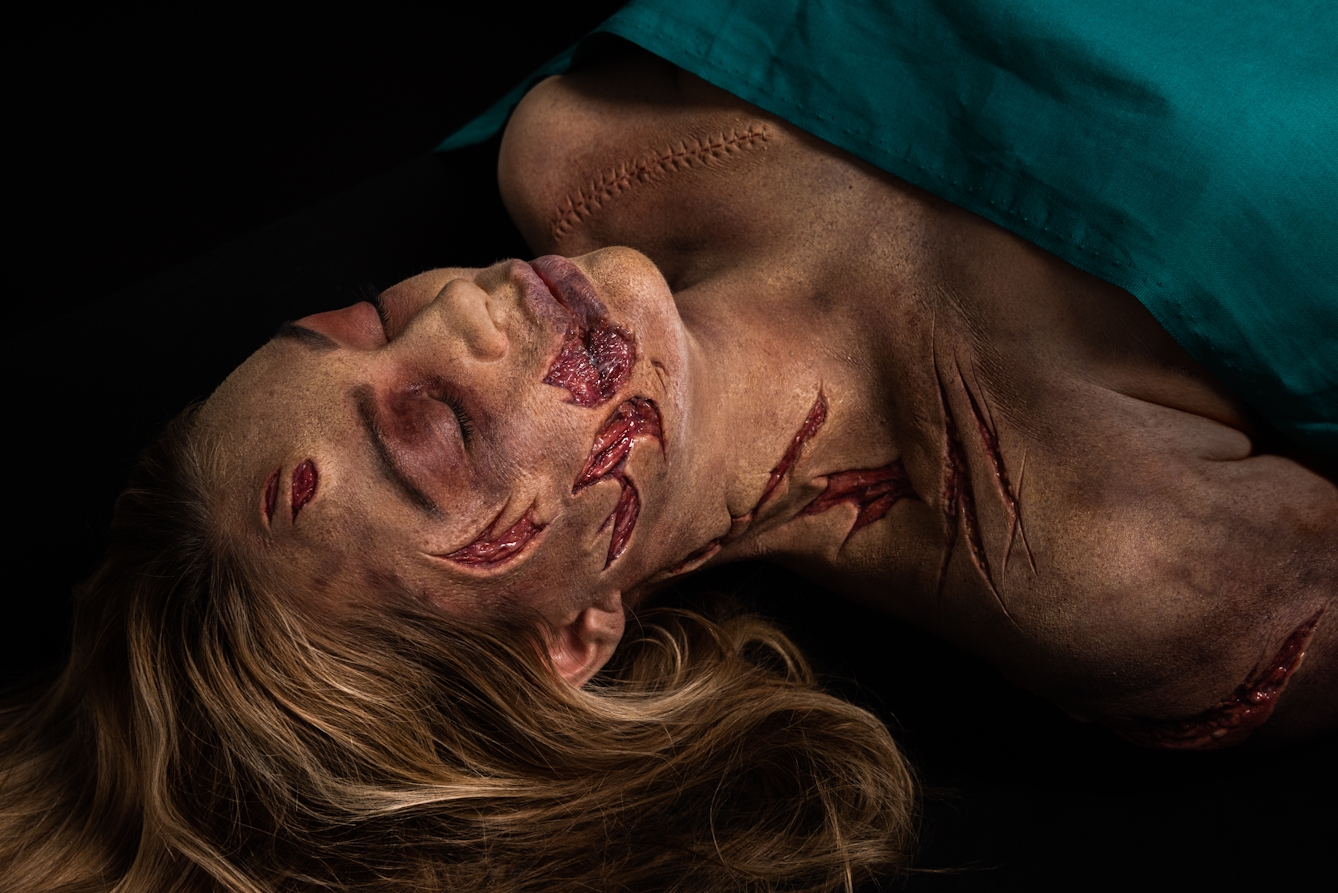
“These cadavers are not beautified or in an unrecognisable state of decomposition; they are identifiable as humans who have been victims of horrific events.”
Other shows like comedy horror ‘Ash vs the Evil Dead’ (2015–18) and comic-book adaptation ‘iZombie’ (2015–19) use more extreme representations but get away with it due to the humorous content that the B-movie and comic-book styles allow. ‘iZombie’ depicts corpses in many different ways, in addition to showing daily activities in the morgue. Bodies that are bloated or in an advanced state of decomposition have appeared, as well as uncovered bodies being moved.
These new depictions are not only present in comedy and horror shows. In the 2013–16 series ‘The Fall’ one of the victims is shown in rigor mortis, and is even moved in this state, making the whole scene very uncanny. One of the medical examiners is seen to move the cadaver’s joints to loosen the rigor mortis, and later we see the main pathologist cutting intestines as though preparing food.
This points to a more realistic view of death and the forensic process. It is not performed in a dark, highly technological room, but rather depicted in a mundane, ‘normal’ setting. This makes it more realistic at the same time as showing the unsettling nature of these forensic processes. Even children are included in series such as ‘Dark’ (2017–20), where the corpse of a young boy is found in the woods to later be examined back at the medical examiner’s office.

One of the major changes in the representation of the cadaver is a move away from a ‘sleeping’ victim with eyes closed to an eerie, authentic-looking corpse with eyes wide open.
One reason for these changes in contemporary TV would be the readily available access of realistic images online and the reduction of censorship within news and media. To create the same empathetic connection with audience, the series must interact more within the social idea of death. If news media is showing brutal realism, this is reflected through artistic interpretations and codes.
These cadavers are not beautified or in an unrecognisable state of decomposition; they are identifiable as humans who have been victims of horrific events. The forensic gaze has not completely been removed, and has not been used to purify the cadaver as completely as we may have seen ten or 20 years ago. There is still room for recognition, for empathy and a way to face the disturbing possibility of our own untimely demise.
So, one can ask, what is the most ‘gore-geous’ depiction? And the answer is clear to me… the one that’s closest to reality.
About the contributors
Hildegunn M S Traa
Hildegunn M S Traa is an artist, prosthetic make-up artist and writer. She is originally from Norway, and is now based in the UK, working in the film industry, and selling her art and products on her Etsy store. In 2020 she completed an MA in Folklore Studies at the University of Hertfordshire with a dissertation topic on depictions of disease. Hildegunn is currently researching World War II hauntings in connection with landscapes, folklore about disease and, of course, death and film. She aims to combine all of her artistic and academic skills and has ambitions to create imaginative publications and exhibitions on these topics.
Steven Pocock
Steven is a photographer at Wellcome. His photography takes inspiration from the museum’s rich and varied collections. He enjoys collaborating on creative projects and taking them to imaginative places.
